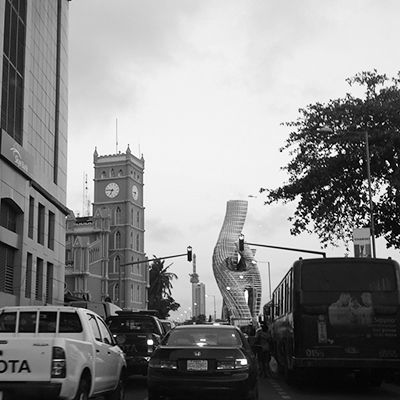“It is morning again, and she exhales…humans and metallic carriers gush out of her colossal breath, filling arteries and veins called streets, spilling programs and processes everywhere, and anywhere. The ritual is complex, mysterious and unstoppable. She is Lagos, standing akimbo under the sub-Saharan sky, on the shores of the Atlantic. With well over 21 million people, Lagos is the largest city in Africa with a monstrous growth rate that may see its population rise to nearly 50 million by 2050. my concern is how it will sustain itself. How will it manage its own footprint and its stochastic nature threatening to congeal into a Brownian ho-hum?”
Lady Marina — the proposed skyscraping figure for the Lagos Marina, is not just a Tower. The building is fashioned after the cancellous bone’s extension and connective propensities. It thus appears to look like 3 formerly independent towers are wrapped around each other in a sort of collaborative position. This opens up possibilities of large vertical masses with minimal physical footprints on real estate. The effects of this brings to fore, propensities of land economy, as well as stable low level urban temperature. The building helps mitigate energy costs; optimizing augmented closed-loop sustainable energy production that include solar energy, a mini-wind farm, biogas and algae synthesis. With the current and impending population situation, and for the sake of medium to high income commercial and residential shelter, the tower capitalizes on two of the most down-played resources in the city: transportation and data. ACID reports that big data is always found wanting in Nigerian cities and this has been a big chasm between Nigerian cities and sustainable development. Transportation and data are engaged in the tower with a motive of redirecting the city towards a sustainable economy of information.
Prior to Lady Marina, information had not really enjoyed attention in the framework of a circular economy in African cities. ACID is therefore pushing the envelope in this regard. The plan is to provide sustainable information as a platform for forging social and physical infrastructures that can withstand the population load of the city. The tower contains medium to high class housing as well as a wide array of civic programs which include a clinic, casino, a hotel, a mall, and various office spaces. ACID posits that if a lot of relevant information can be perpetually derived from medium to high income regions, it can contribute to the ease of fostering inclusivity within Lagos city.












